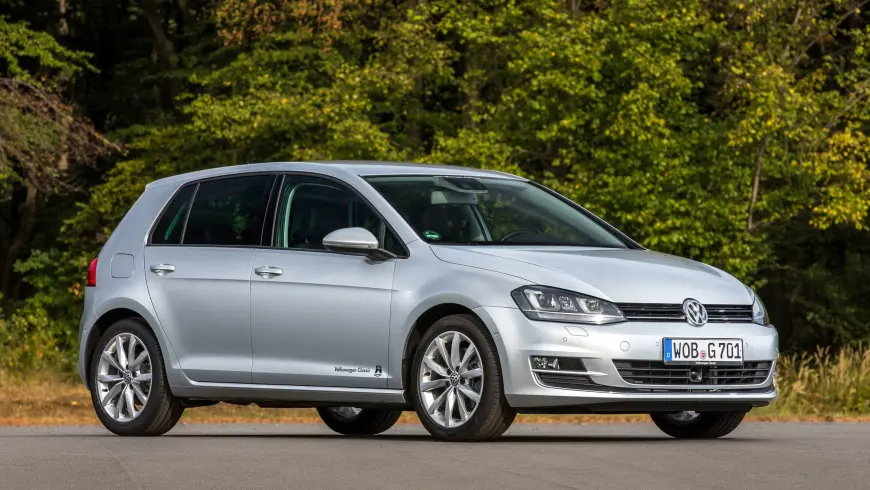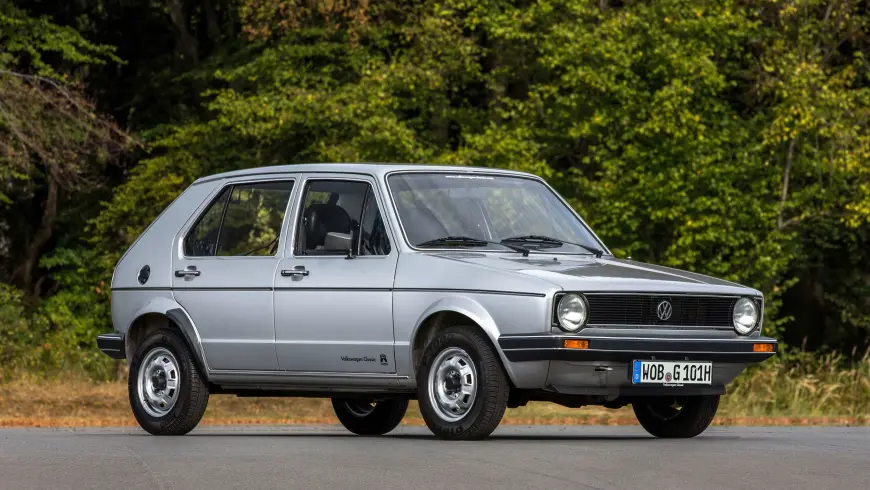

Transport Infrastructure Policy Requires a Holistic Approach
No matter the type of road user, the reason for the journey, or the distance covered: suitable, reliable transport infrastructure is essential for satisfying a fundamental criterion of mobility – getting safely from A to B. The World Health Organization (WHO) estimates that up to 50 million people are currently injured every year in road traffic accidents, around 1.2 million of which are fatalities. The causes of these accidents are manifold, but in many cases the design and condition of the road infrastructure adversely affect how the accident occurs or how severe it is.
More than ever, road infrastructure finds itself having to reconcile differing requirements relating to the users, the means of transport, the vehicle (if one is used), the reason why each user opted for their particular method of travel, and the social and political backdrop. This is compounded by a rapid transformation in mobility patterns in many parts of the world. Advances in sensor systems, computing power, and battery capacity have given rise to new travel methods or revolutionized existing ones. Infrastructure modifications cannot keep pace with this transformation.
If we look at the different vehicle types currently available, the challenges facing transport and road environment planners today soon become clear. The trend seen with cars where each new model in a particular series is wider, longer, taller, and heavier than its predecessor, is nothing new. However, as SUVs and vans experienced a boom at the turn of the millennium, these growing dimensions quickly reached unprecedented levels. The requirements concerning the size of parking spaces and the width of road lanes suddenly changed. This has and continues to lead to dangerous situations, particularly in built-up areas. Drivers of these wider vehicles mount the sidewalks to park, there is no longer enough space for larger emergency vehicles to pass by, and the vehicles themselves block lines of sight, particularly when it comes to children.
A similar trend followed just a few years later for bicycles when they started to be fitted with electric motors. Pedelecs are much heavier and, on average, faster than traditional bicycles, and in many cases they are also longer and wider. Cargo bike derivatives are sometimes more than 2.5 meters long and their unladen weight may well exceed 60 kg. Traditional cycling infrastructure cannot cope with these new requirements, and there are often no suitable parking spaces in front of shops and educational institutions or in residential areas. Machines such as e-scooters and self-balancing vehicles likewise come with their own specific requirements and risks.
Wide Range of Different Mobility Concepts
Similar trends can be seen with commercial vehicles. Whether it’s construction site trucks or long-haul vehicles, the decision nowadays is usually to push things right up to the legal limits. Courier and express delivery vans – which have experienced a boom due to online shopping – pose the next challenge. This particularly affects the infrastructure in built-up areas, which is already heavily used.
The wide range of different mobility concepts and vehicles also means a wide range of requirements from the various infrastructure users. Pedestrians want wide, well-lit sidewalks that have no edges to trip over and are far enough away from the road so that passing vehicles do not spray them with surface water when it is raining. Cyclists also want a protected environment where they are not constantly at risk of being run off the road by vehicles that overtake them too closely, having to dodge pedestrians, or colliding with car doors that the occupants have opened without looking to see if the road is clear. Car drivers want to get to where they are going quickly without constantly having to let oncoming traffic pass due to parked vehicles, or constantly being stuck behind cyclists that seem to them to be moving slowly. Courier and parcel delivery drivers ideally want there to be a large enough parking space in front of every delivery address. Residents want a parking space, ideally slap bang in front of their front door, and traffic-calming measures, but also enough space so that garbage and moving trucks or, should the worst happen, emergency vehicles can get to them easily.
As the mode of transport that people use changes, the requirements involved often also change.
Another important aspect is the need to design suitable infrastructure for people with different impairments. Examples include guidance systems for those with a visual impairment and ensuring there are no rental e-scooters obstructing their path, minimal or no curbs for people with reduced mobility, sidewalks that are wide enough to take rollators and wheelchairs, barrier-free crossings at intersections, and readily available unoccupied disabled parking spaces close to the destination.
On the other hand, most people share a common desire for shorter waiting times at traffic lights, priority at intersections, and clear routes whenever possible. These things are very difficult to implement. Infrastructure projects also generally cannot be realized quickly, and they need to last a long time after the work is complete – not least due to the high costs involved. Infrastructure projects generally involve a huge amount of planning because they need to meet current as well as expected future requirements effectively, ensure that no type of road user is unknowingly excluded, and comply with the legal framework and budget.
Applicable Legal Framework Poses a Major Challenge
In most countries, the planning phase is followed by an equally time-consuming approval phase before implementation can start. However, due to the rapidly changing requirements arising from the mobility revolution and the fact that municipal authorities often lack the necessary funds, a pragmatic approach has been taken over the past few years, resulting in new transport concepts being developed and implemented quickly. The fact that they are often not fully thought through or do not fit into existing concepts is another matter.
This approach was given additional impetus as a result of the coronavirus pandemic. Many places saw a big drop in car traffic, enabling them to take measures such as turning sections of road into cycle paths (“pop-up cycle lanes”) or blocking off entire sections of road completely to motor vehicles. The transition away from car-centric cities to net zero cities which focus on people and the environment has also led to a rethink, particularly when it comes to urban environments. The things that citizens want have now changed, leading to corresponding changes in the political landscape and, in turn, at the relevant official departments and authorities. Nowadays, infrastructure is no longer simply planned with the aim of ensuring that people reach their destination quickly by car and there are enough parking spaces. Instead, it is much more a case of discussing how many parking spaces can be eliminated in favor of bicycle paths and footpaths, and where bus lanes should be created.


The applicable legal framework often poses a challenge here. In many cases the laws originate from a time where the focus was on using cars. Moreover, it is difficult or even impossible to formulate corresponding laws at a national level such that they do not hamper individual projects that make a lot of sense at a local level. It goes without saying that traffic rules need to be consistent and must be communicated clearly to all road users. However, if a little more freedom were to be granted at municipal level, especially for transport-related trials or to provide special protection for vulnerable road users, then in many places this could improve road safety and sustainability without entailing any notable disadvantages or risks.
The legal requirements stipulating that there needs to be a minimum number of pedestrians per hour before a pedestrian crossing (zebra crossing) can be installed, do not always make sense in front of schools and kindergartens. In many places, the requirement that there needs to be a minimum number of regular buses per hour before a bus lane can be installed, raises the question of how local public transport can be made more attractive so as to encourage more people to make this modal shift. Ultimately, we end up in a farcical situation if high accident figures and/or breaches of air pollution limits mean a lower speed limit is mandated, but then the accident figures/air quality improve(s) to such an extent that there is no longer a legal basis for the lower speed and it needs to be revoked.
Many Different Requirements Need to Be Considered
As a result, infrastructure policy requires a holistic approach. It is not just about fulfilling the original aim of ensuring people can travel from A to B safely and effectively – we need supra-regional transport concepts that take account of the different types of road user, their specific requirements, and the policy intentions with respect to the mobility revolution. These concepts must be taken up and implemented for local projects. Essential considerations, both for standalone projects and the overarching concept, must be: safety (road safety and general safety), the sustainability of the measures and mobility options that are being promoted, achieving net zero during implementation and when the solution is “in operation”, maximizing usability, care and maintenance, and creating livable spaces with a high-quality environment. Potential future changes to mobility patterns and the type of vehicles that people choose to use also need to be considered, so as to ensure changes can be made with a minimum of effort later on.
However, such measures can only be implemented in a meaningful way if the existing space is reallocated. This is because there is generally only a finite amount of space available to work with, which cannot be extended. Yet this is also precisely where major political problems lie. Getting rid of parking spaces, reducing traffic lanes, lowering the speed limit, installing asphalted bicycle paths in parks, introducing bans on overtaking cyclists, excluding certain road users from bicycle boulevards, or blocking off main roads for cyclists all constitute restrictions on people’s existing rights. It is not an easy nut to crack – neither for politicians (who are dependent on votes) nor anyone affected (who will each have their own opinion about how they should be able to travel and about sustainability, along with various other needs). As a result, far too often we see a search for compromises which essentially do not achieve any of the goals that were set and ultimately cause confusion and dissatisfaction overall, and in the worst case lead to more accidents and casualties. A good and frequently seen example of this is when lines are painted on the road to mark out a bicycle lane. These lanes are mostly too narrow for cyclists, they encourage car drivers to make dangerous overtaking maneuvers, and they only go as far as the next intersection before suddenly stopping because an overarching active travel concept has not been implemented. The only figures that look good in this respect are the municipal statistics on the amount of cycling infrastructure installed.
In order to adopt a holistic approach to infrastructure planning, all stakeholders must be Ideally, the different types of road user would be incorporated in a holistic infrastructure planning approach. consulted early on in the planning phase so that their specific needs can be defined. This also concerns deciding how the (re)construction costs and the resulting follow-on costs and work should be allocated. Depending on the nature of the specific project, this could fall not only to the relevant contracting road enterprise and the official departments responsible for environmental protection and mobility, but also the public transport providers affected, the organizations responsible for road cleaning, the police, the rescue services, and affected telecommunications service providers and utility companies. Depending on the scale of the measures, it may also be necessary to consult accident commissions, associations that champion the interests of pedestrians, cyclists, and people with impairments, and the affected citizens.
Accidents, infrastructure, people and technology – plus numerous accident examples and statements from experts from all over the world: the DEKRA Road Safety Report 2024 sheds light on the topic of “Traffic Environments for People” from a variety of perspectives.
Download now
